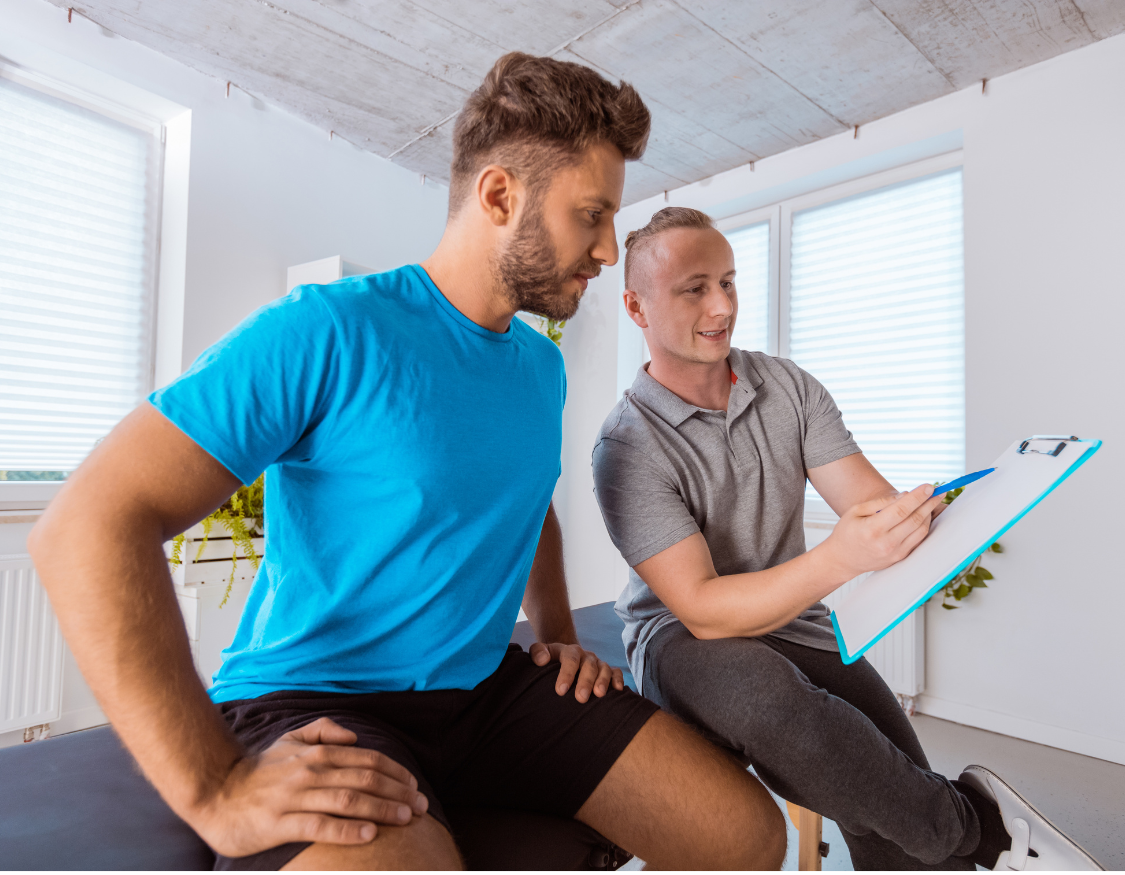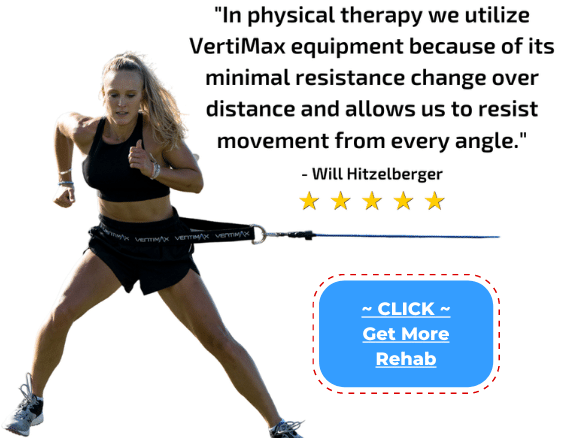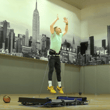When it comes to high performance in sports, most athletes tend to focus on the training and competition components, but when you get injured sports rehab and recovery becomes a priority.
Training is clearly the most compelling part of an athlete’s routine. In order to have sustainable success as an athlete, there are more mundane parts of that typical routine that athletes must adhere to on a consistent basis.
Post-game and post-workout recovery certainly qualifies as one of these critical factors in performance, as it’s been shown to help with physical repair after high levels of exertion, improving an athlete’s ability to repeat high levels of performance.
Recovery is also a big aspect in injury prevention, as it helps restore muscles and keeps athletes from performing in a compromised physical state. But when these injuries do inevitably occur for athletes, maintaining discipline in their rehab is another monotonous yet important part of long-term athlete success.
While injury rehabilitation can be grueling, it is ultimately necessary, as it helps heal damaged tissue, manage the pain of the injury, and help prevent future injuries. Failure to perform rehab in a disciplined manner can lead to reduced effectiveness and performance of the damaged muscle area.
While elite level athletes will have performance professionals and teams that assist them in executing these habits, it can be a bit more difficult for the average athlete to know how to perform these practices effectively and stick to them on a regular basis.
10 Recovery Exercises
While static movements and stretches haven’t necessarily shown to have any effect on recovery, dynamic movements can have a positive impact on the ability to exert power after a high level output like a game. Let’s take a look at some of the best exercises that athletes can use for recovery using resistance.
1. Knee Raises
Knee raises are a great way to engage your quads and hips and add resistance as you progress. While lying on the ground and loading your ankle, athletes should raise their knee to their chest with force in order to really engage these muscles. Check out the video below for more instructions.
2. Straight Leg Raise
For athletes looking to engage their hamstrings and hips, they can do so with Leg Swings. Attach resistance at the ankle and lay on the ground while the athlete swings their leg towards their upper body while keeping their leg straight.
3. Leg Extensions
Another way to loosen up your quad muscles is with the Leg Extension. Maintaining the same position as the previous exercises, the athlete with their knee bent at a 90-degree angle and extends their leg straight outward.
4. Cross Body Knee Raise
To engage your glute muscles while using the VertiMax, athletes can perform this Cross Body Knee Raise shown below. While continuing to lay on the ground with the resistance loaded at their ankle, the athlete can raise their knee towards the other side of their body.
5. Knee Raise with Outward Turn
To work the groin and interior muscles of the leg, athletes should then perform a movement pattern in the opposite direction of the Cross Body Knee Raise, raising their knee away from their body. Check out the link to the video for a good example of how to perform the exercise correctly.
6. Abductor with Plank
To really engage the abductor muscle, while also activating their core, athletes can do this exercise from the plank position. With the resistance still attached at the ankle and holding a plank, athletes should extend their leg outward away from their body. Take a look at the video for a demonstration of the exercise.
7. Knee to Chest
While maintaining the plank position, athletes can then engage their quads with the functional Knee to Chest movement. The focus should be on moving their leg up in a straight line while keeping their core tight.
8. Straight Leg Quad
There’s also a variety of movements athletes can perform from a standing position, such as the Straight Leg Quad. While standing and loading the ankle with resistance, the athlete performs a straight leg stride with one leg, keeping that foot off the ground for the entirety of the exercise. Check out the video to learn more.
9. Stride with Push
Building off the previous exercise, this exercise focuses more on the push movement, which works more of the posterior chain. While standing and the knee bent at a slight angle, the athlete pushes backward to work the hamstrings and glutes. See a demonstration of the exercise in this video below.
10. Cycle Drill
The next progression of the standing exercises is the cycle drill, which gives the athlete a total leg workout. To perform correctly, the athlete starts with close to a 90-degree bend at the knee and pushes downward with force.
6 Rehab Exercises with VertiMax
In competitive sports, injuries are an inevitable part of the process. With resistance, athletes can help strengthen and heal damaged muscles faster and prevent injuries in the future. It's also a great way to improve performance and availability. Here are some excellent examples for athletes looking for a way to rehab their injuries.
1. Side-Step
A common exercise in physical therapy, the Side Step helps to build strength and stability to multiple muscle groups. To perform, start with your feet shoulder width apart and knees slightly bent. Loading each ankle with resistance, you can begin to take measured steps sideways.
2. Lunge
Athletes can perform a forward and backward lunge seamlessly by separately loading each leg with resistance. This is a great way for athletes to develop strength in their hamstrings and glutes, while building stability in their lower body.
3. Hip Hinge
Another way to target the hamstrings and glutes is with the Hip Hinge, a core movement pattern of any physical therapy routine. To perform, this examples show resistance attached to the waist. then drop your hips as if you were sitting in a chair.
4. Core Stabilization
There are also numerous ways you can use the resistance to strengthen your core. In this video, the athlete loads the hips and holds another attachment in front of them. Then, they perform the Side Step exercise, stepping under control away from and then back towards the resistance. This is an excellent way to engage the core and help build stability in the hips.
5. Quadruped Exercise
With this Quadruped Exercise, you can strengthen multiple muscle groups simultaneously.. Athlete starts in a crawling position with resistance attached at the waist and shoulder, then moves away from the resistance on their hands and feet. This activates the core while also helping to build stability in the shoulders.
6. Bird Dog
Building off of the Quadruped Exercise, the Bird Dog is an excellent way to engage the core and build shoulder stability. Maintaining the resistance at the waist and shoulder, the athlete extends the non-load bearing arm outward and the opposite leg out simultaneously. Watch the video to see an example of the Bird Dog done correctly.
Stay Ahead of the Game with VertiMax
For those that are looking for an efficient way to accomplish both the recovery and rehab parts of their routine, the VertiMax offers the versatility to do both. With its lightweight resistance pulley system, The VertiMax provides adequate levels of stress on injured muscles to help with the healing process, as well as enough resistance to aid in the recovery process. With that said, let’s examine some of the ways that athletes can go about their recovery and rehab practices with the VertiMax.
For athletes to be able to have sustained success, it’s imperative that they have a comprehensive plan across all aspects of physical development. While strength training and skill development are necessary and critical, those areas need to be complemented by recovery practices for the athlete to be able to give their max output while training. Learn more about how VertiMax can improve your recovery or help you rehab from an injury.





.png?width=110&name=Listing%20Image-basketball%20ladder%20drill%20%20(350%20x%20350%20px).png)














